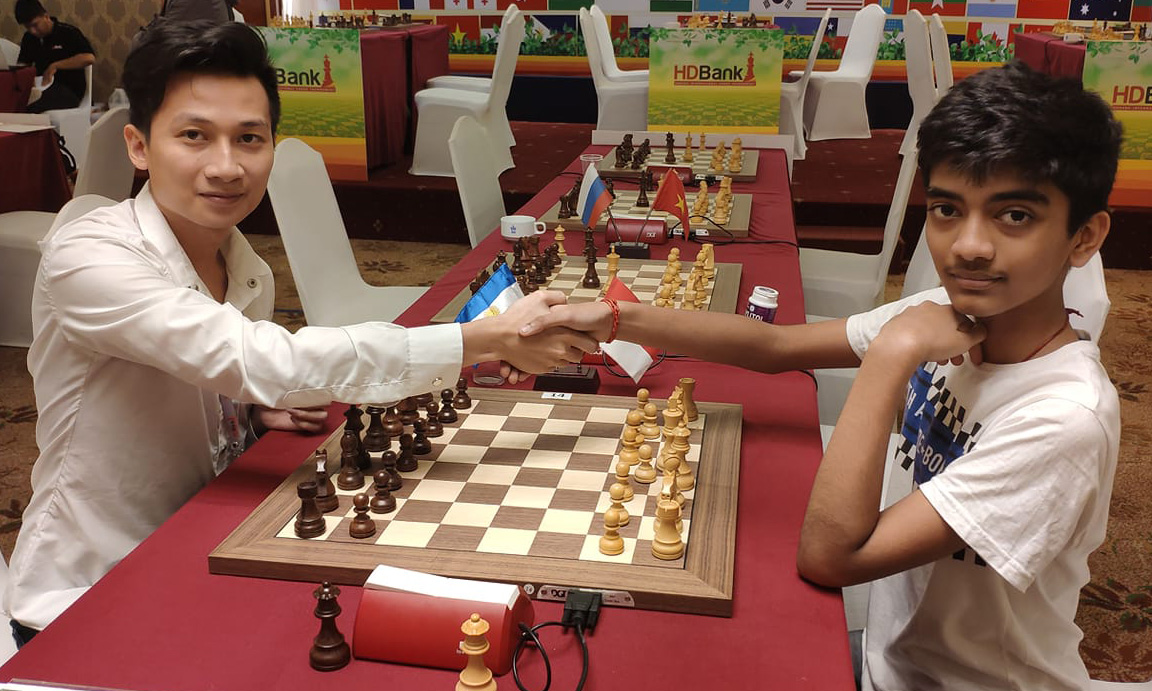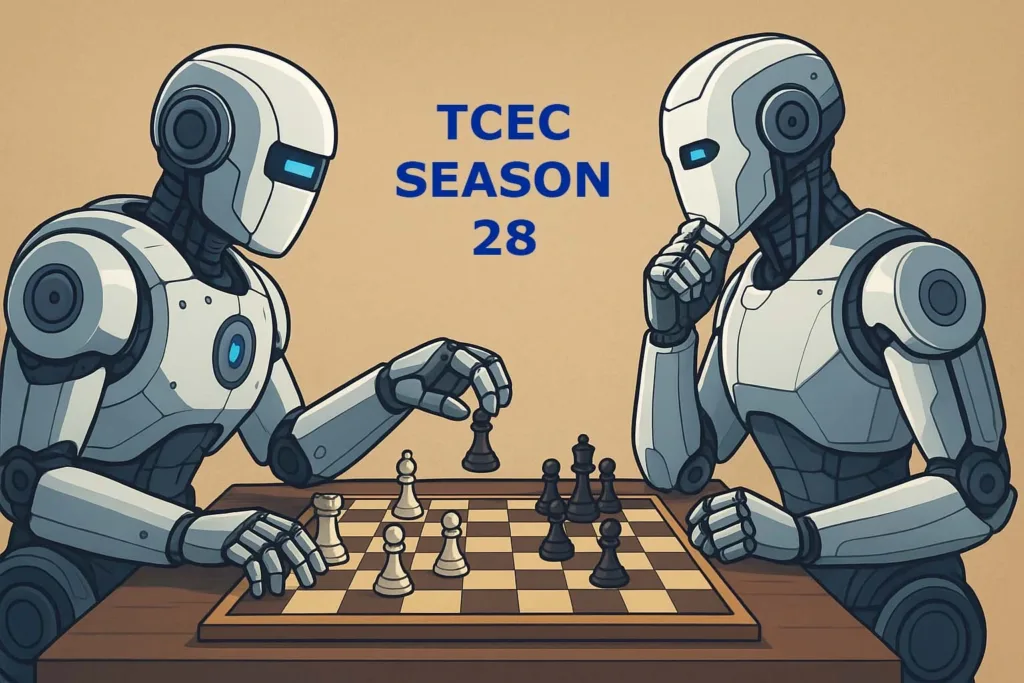The Top Chess Engine Championship (TCEC) is the world’s most prestigious competition for computer chess programs. It features long time controls, powerful hardware, and the strongest engines like Stockfish and Lc0. But if you tune in, you’ll notice something unusual: games almost never begin from the standard chess opening position. Instead, they start from carefully chosen opening lines. Why is that? And how are those openings selected, especially for the Superfinal?
Why TCEC doesn’t start from the normal position
The short answer: to make the games more exciting and varied.
If engines always started from move one, they would often repeat the same openings. In tests, more than 80% of games collapsed into just a few well-known systems. Between engines of equal strength, these lines usually lead to draws. That makes for boring viewing and does not help identify the best engine.
By forcing games to begin from different positions, TCEC makes engines prove themselves in all types of situations, not just in their favorite lines. A champion engine should be able to handle sharp gambits, quiet positional struggles, and everything in between.
This approach is different from human tournaments, where players choose their openings. TCEC deliberately removes that choice. The starting position is treated as just one among thousands of possible balanced positions. In fact, in engine chess, the “normal” starting position is considered too drawish.
The role of bias
Another reason TCEC uses selected openings is to reduce the draw rate. If very strong engines play long games from balanced openings, the result is often 90% draws. That leaves little room for one engine to prove superiority.
To avoid this, openings are chosen with a degree of bias. Bias means the opening favors one side according to engine evaluation. For example, an opening might give White an advantage of +0.60, or even leave Black slightly better. This forces engines to fight harder. Sometimes one engine must defend a difficult position for 100 moves. Other times, a risky gambit may lead to chaos right out of the book.
In lower leagues of TCEC, openings are relatively balanced. But as the season progresses to League 1, Premier League, and finally the Superfinal, bias is introduced more heavily. That ensures fewer dull draws and more decisive results.
Who selects the openings?
Two people are behind the opening books.
- Nelson Hernandez, known as “CatoTheYounger_TCEC,” has been preparing openings since 2013. He uses his vast database, Catobase, and focuses on variety and fairness. His books cover the leagues leading up to the Superfinal.
- Jeroen Noomen, a veteran computer chess expert, prepares the Superfinal book. His approach is more knowledge-driven. He looks for lines that create fights, with different pawn structures and themes. Jeroen’s work is crucial, because the Superfinal is the highlight of every TCEC season.
Together, they ensure the competition avoids sterile draws while still being fair.
The Superfinal book for Season 28
Season 28’s Superfinal, starting on August 24, 2025, features Stockfish against Lc0. The 50 opening lines were prepared by Jeroen Noomen with help from collaborators Windfishballad and Kittenkaboodle.
The process was rigorous. Hundreds of candidate openings were analyzed by both Stockfish and Lc0, each for 7–10 minutes, on a 512-thread machine. From this pool, Jeroen picked the most promising 50. He looked for positions where the engines disagreed in evaluation, which means the play could go in different directions. Some lines with sharp evaluation swings were included to spice up the fight.
The openings come from many sources. Classic games of Steinitz, Nimzowitsch, Petrosian, Anand, Judit Polgar, and Magnus Carlsen are included, along with lesser-known grandmasters. Jeroen also used Stefan Pohl’s “Unbalanced Human Openings” (UHO), a collection designed to avoid symmetrical and drawish positions.
Features of the Season 28 book
- Average depth: 7.96 moves. This is slightly shorter than in some past Superfinals.
- High bias: Most exit evaluations are around +1.00 or -1.00, which is just on the edge between “slightly better” and “almost winning.”
- Black chances: Two lines even give Black the advantage from the start, increasing the possibility of Black wins.
- Balanced distribution: If a weaker opening is included, it is followed by a stronger one to even things out.
- Diverse ECO codes: Of the 50 lines, 18 are from ECO B (Sicilians and Caro-Kanns), 13 from ECO E (Nimzo and Indians), 10 from ECO A (flank openings), with the rest spread across C and D.
- Move lengths: Most lines are 8 moves deep (25 lines). Others range from 5 to 10 moves, with one line longer than 10 moves.
The result is a book designed to keep the draw rate between 65% and 80%, while ensuring plenty of decisive and dramatic games.
The bigger picture
TCEC’s philosophy is clear: the goal is not to mimic human tournaments, but to test engines in the broadest way possible and to entertain viewers. By forcing Stockfish, Lc0, and other engines into unusual, sharp, or even uncomfortable positions, the event produces games full of surprises.
It is true that as engines get stronger, keeping draw rates low will become harder. But by carefully selecting openings and introducing bias, TCEC hopes to maintain its reputation as the place where computer chess delivers both science and spectacle.
TCEC Openings & Superfinal FAQ
Q: Why don’t TCEC games start from the usual opening position?
A: Because engines would repeat the same lines and draw too often. Special openings force variety and excitement.
Q: What is “bias” in TCEC openings?
A: Bias means the opening favors one side (+0.50 or more). It reduces draws and makes games more decisive.
Q: Who chooses the openings?
A: Nelson Hernandez prepares books for the leagues. Jeroen Noomen prepares the Superfinal book.
Q: How are Superfinal openings selected?
A: Hundreds of candidate lines are tested with Stockfish and Lc0. The best 50, often sharp or unbalanced, are chosen.
Q: Where do the openings come from?
A: Classic GM games, Stefan Pohl’s “Unbalanced Human Openings,” and engine-tested positions.
Q: How long are the opening lines?
A: In Season 28, the average is about 8 moves, with most between 6 and 10 moves.
Q: Why include Black advantages?
A: To give Black real winning chances and avoid predictable draws.
Q: What’s the goal draw rate for the Superfinal?
A: Around 65–80%. Enough draws to show balance, but not so many that the match is boring.
Q: Why is reducing draws so important?
A: Too many draws means the champion could be decided by luck. More decisive games prove who is stronger.
Q: What makes Season 28’s Superfinal book special?
A: It mixes history and modernity: famous GM games, unbalanced openings, sharp evaluations, and high variety.

I’m Xuan Binh, the founder of Attacking Chess, and the Deputy Head of Communications at the Vietnam Chess Federation (VCF). My chess.com and lichess rating is above 2300. Send me a challenge or message via Lichess. Follow me on Twitter (X) or Facebook.

